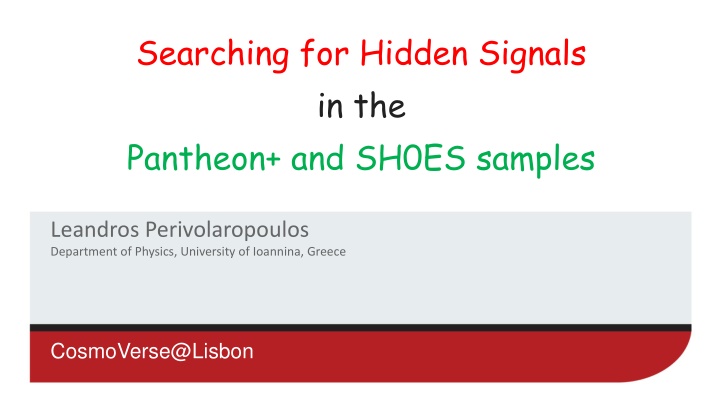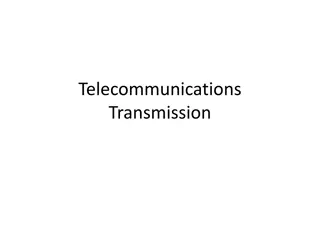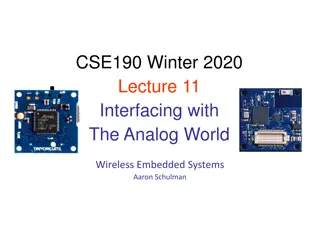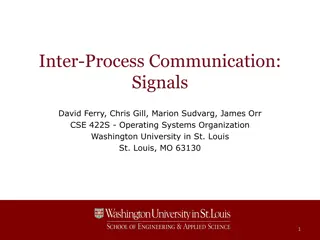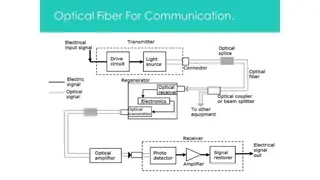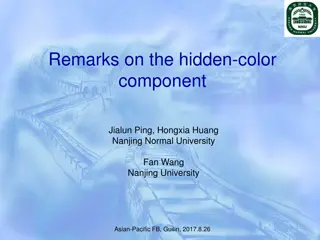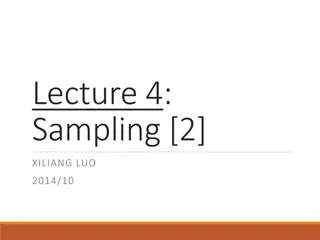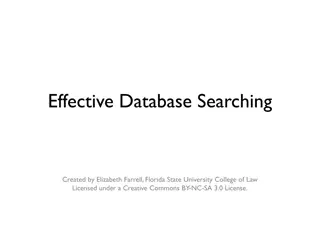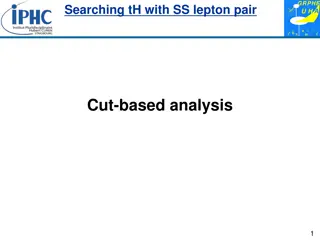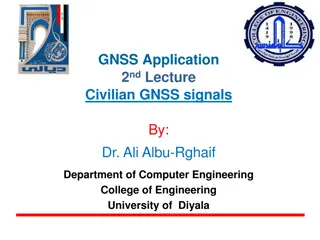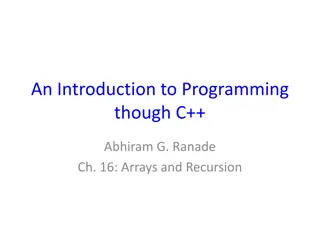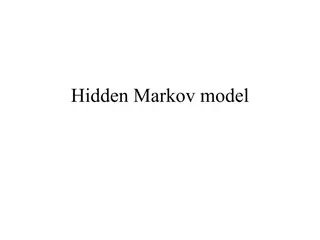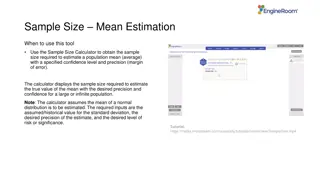Searching for Hidden Signals in Pantheon Sample
Study conducted by Leandros Perivolaropoulos at the University of Ioannina, Greece, explores potential hidden signals in Pantheon and SH0ES samples. Findings suggest non-homogeneous parameters and unexpected anisotropy changes, impacting cosmological measurements. Details include examination of absolute magnitude and luminosity, isotropic Monte-Carlo simulations, and implications on fitting cosmological parameters. The research also delves into measuring Hubble constant using Pantheon dataset, highlighting degeneracy issues and agreement with previous studies. Furthermore, the investigation introduces new degrees of freedom in Pantheon likelihood, revealing transitions in parameters and tensions in cosmological models.
Uploaded on Apr 13, 2025 | 0 Views
Download Presentation

Please find below an Image/Link to download the presentation.
The content on the website is provided AS IS for your information and personal use only. It may not be sold, licensed, or shared on other websites without obtaining consent from the author.If you encounter any issues during the download, it is possible that the publisher has removed the file from their server.
You are allowed to download the files provided on this website for personal or commercial use, subject to the condition that they are used lawfully. All files are the property of their respective owners.
The content on the website is provided AS IS for your information and personal use only. It may not be sold, licensed, or shared on other websites without obtaining consent from the author.
E N D
Presentation Transcript
Searching for Hidden Signals in the Pantheon+ and SH0ES samples Leandros Perivolaropoulos Department of Physics, University of Ioannina, Greece CosmoVerse@Lisbon
Main Questions Q1: Is the absolute magnitude parameter M used for fitting with Pantheon+ homogeneous? A1: No. The data favor a change of this parameter at about 20Mpc Q2: Is the absolute luminosity of SnIa derived from the SH0ES data homogeneous across the sample? A2: Maybe. There are hints at about 2 for a change of this absolute luminosity at about 20-25Mpc. Q3: Are the Pantheon+ and SH0ES data at various redshift bins consistent with isotropic Monte-Carlo simumations? A3: Yes. In fact in many bins they are more isotropic than the Monte-Carlo simulations. This may be due to overestimated uncertainties of the Pantheon+ magnitudes. Q4: Are there unexpected changes of the anisotropy level between consecutive distance/redshift bins? A4: Yes. Based on Monte-Carlo expectations, there is an unexpected rise and drop of the anisotropy at about 20-40Mpc.
Measuring H(z) with the 2022 Pantheon+ dataset from SnIa in Cepheid hosts at z<0.01 1701 SnIa datapoints (zi,mBi, Cephj), i=1, ,1701, j=1, ,77, 0.001<zi,<2.26 Also provided SH0ESi=mBi-MCepheid Standard maximum likelihood of previous Pantheon sample (no Cephj) Degeneracy between H0 and M (no way to fit H0 without prior knowledge of M)
Measuring H(z) with the 2022 Pantheon+ dataset Pantheon+ likelihood: Utilizing the 77 Cepheid distance moduli Cephj of SnIa in Cepheid hosts: Best fit parameter values: Broken degeneracy between H0 and M due to the 77 SnIa distance moduli in Cepheid hosts A way to fit H0 along with other cosmological parameters without prior knowledge of M! Agreement with Brout et.al. 2022 Brout et al 2022: M not included in fit.
New degrees of freedom in the Pantheon+ likelihood Allow for a transition of M at some distance dc New likelihood for Patheon+: Q: 1. What is the quality of fit of CDM with the new likelihood? 2. Are the best fit M>, M< consistent with each other and with the best fit M of the standard likelihood
New degrees of freedom in the Pantheon+ likelihood Q: Does this modeling of M<, M> affect the best fit values of other cosmological parameters? Best fit 0m remains unchanged in the new likelihood h shifts to somewhat higher values! A1: 2=-19 2:No! Significant tension! Q: What is the origin of this tension? Systematics? New Physics? Both?
The volumetric redshift bias: A known but uncorrected systematic in Pantheon+ z> : Random peculiar velocities in outer shell compared to a given shell at redshift z. If z> < 0 then the outer shell galaxies are incorrectly projected on the z shell leading to smaller distance estimate than the true distance d> . d z< : Random peculiar velocities in inner shell compared to a given shell at redshift z. If z> > 0 then the outer shell galaxies are incorrectly projected on the z shell leading to larger distance estimate than the true distance d> . d> d< Problem: There are more galaxies in the outer shell than in the inner shell due to larger volume of the outer shell! More galaxies at higher distances are incorrectly projected to lower distance in the Hubble diagram due to peculiar velocities! Thus: d-d CDM(z)>0 for z<0.01 where the effect is important.
The volumetric redshift bias The volumetric redshift bias is dominant at low redshifts where the volume difference is more prominent. <- model(z)>0 For z<0.01 mB<-M<- modelvrb(z) > mB<-M- modeltrue(z) = 0 modelvrb(z)= modeltrue(z) M<<M=M> If volumetric redshift bias is not corrected it leads to a lower SnIa absolute magnitude at z<0.01 mB<-M>- modelvrb(z;p) = 0 Incorrect value for p. For z>0.01 (no vrb): mB>- model(z)=M> Q: Is this the only reason for the M>-M< inconsistency or there is also a physical transition of SnIa luminosity? Thus, we expect: M>>M<
Another new likelihood for Pantheon+ Remove Hubble diagram distance moduli data with z<0.01 but keep distance moduli data of SnIa in Cepheid hosts. The tension between M< and M> is smaller but a significant part of it remains
SnIa luminosities in Pantheon+ Closeby SnIa (d<dc=20Mpc) in Cepheid hosts are systematically brighter more distant SnIa (M<MSH0ES=Mbest-fit) Q: How often could this happen by chance?
Monte Carlo Simulation Steps: 1. Group SnIa that are in the same host and find the weighted mean absolute magnitude corresponding to each j host: 2. For a critical distance dc split the host absolute magnitudes in low distance and high distance bins e.g. 3. For each critical distance dcrit, define the M transition statistic: 4. In the real data we have max = 2.75, at dcrit=22.4Mpc. Q: How often would a larger max occur in Monte Carlo simulated SH0ES/Pantheon+ SnIa in Cepheid host data?
Monte Carlo Simulation A: 94% of the simulated datasets have max smaller than the max of the real data and only about 6% have max larger than the real data. Thus, the part of the M<-M> inconsistency that is due to actual SnIa luminosity mismatch is at about 2 level.
Hemisphere Comparison Method: Isotropy of SnIa Absolute Magnitudes 1. Select random direction and split sky in North-South hemispheres in given redshift bin. 2. Find weighted average of absolute magnitudes in each hemisphere (MN, MS) and their uncertainties. 3. Define anisotropy level statistic: 4. Find direction of maximum anisotropy level max . 5. Repeat for N isotropic Monte-Carlo samples to find anticipated range of max. Standardized SnIa absolute magnitudes of Pantheon+.
Comparison of Pantheon+ M-anisotropy with isotropic Monte-Carlo samples. How frequent are these changes in Monte-Carlo isotropc data? 7% Monte-Carlo simulated data are more anisotropic than real data (overestimated uncertainties?) Sudden changes appear of anisotropy level appear at low redshift bins Real data 1->2 bin
Comparison of SH0ES M-anisotropy with isotropic Monte-Carlo samples. How frequent are these changes in Monte-Carlo isotropc data? 2% Real data Cumulative low distance bin Sudden change appear in anisotropy level of cumulative bin appear at about 30Mpc
Possible Physical Realization Off-center observer in a bubble of distinct transition physics or systematics
Main Questions Q1: Is the absolute magnitude parameter M used for fitting with Pantheon+ homogeneous? A1: No. The data favor a change of this parameter at about 20Mpc Q2: Is the absolute luminosity of SnIa derived from the SH0ES data homogeneous across the sample? A2: Maybe. There are hints at about 2 for a change of this absolute luminosity at about 20-25Mpc. Q3: Are the Pantheon+ and SH0ES data at various redshift bins consistent with isotropic Monte-Carlo simumations? A3: Yes. In fact in many bins they are more isotropic than the Monte-Carlo simulations. This may be due to overestimated uncertainties of the Pantheon+ magnitudes. Q4: Are there unexpected changes of the anisotropy level between consecutive distance/redshift bins? A4: Yes. Based on Monte-Carlo expectations, there is an unexpected rise and drop of the anisotropy at about 25-40Mpc.
